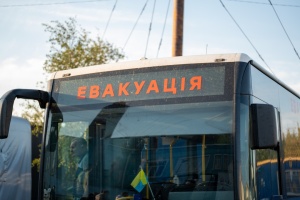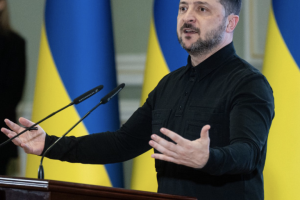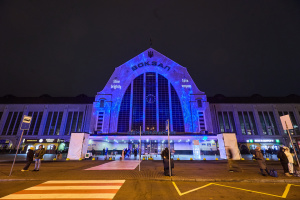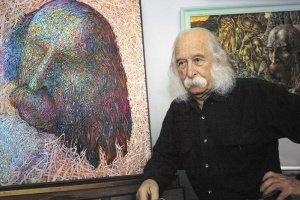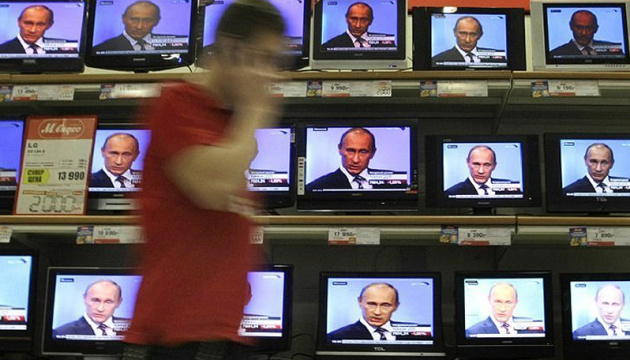
World news agencies and Russian narratives. What words should not be used in covering war
We admit that Ukrainians are often appalled by how certain events are covered by the leading international media. However, it appears that it is easy to dismiss Ukrainian discontent, claiming that Ukrainians are a party to the conflict, and therefore remain biased.
Some established concepts in the global media are actually misleading. It is time to ask: constant minor manipulation or inaccurate terminology used by the media — aren't these something that over time, given their massive outreach, distorts the information space? Over the past century, the Kremlin has demonstrated its ability to systematically and sometimes imperceptibly spread lies across the world.
More than a year ago, Russian fascism (according to historian Timothy Snyder), without hiding, attacked Ukraine with the genocidal goal of wiping the country and the nation off the map. However, even today, we can find phrases about “Ukrainian nationalists who fought with the rebels of the Donbas” to denote the efforts to defend Ukraine’s borders and its constitutional order from hybrid Russian aggression.
“Separatists,” “disputed territories,” “year of conflict in Ukraine,” “regions of Ukraine that vote for joining Russia” — such “mines,” which were once planted by Russian propaganda, still “explode” from time to time in the global information space. In this article, we will look at some erroneous words and definitions used by leading news agencies, such as AFP, Reuters, and AP.
A glossary of terminology related to events in Ukraine can be downloaded here
It must be admitted that perhaps the greatest victory of Russian propaganda after the seizure of a part of Ukraine in 2014 was the fact that the world began to use the term “separatists” in relation to parts of Ukraine. As Ukrainians began to protest and the militants’ connection to Moscow became apparent, the term “Russian-backed separatists” emerged. As they say, the devil is in the details. When we read about separatists who are backed by Russia, people understand it as if there really was a powerful separatist movement in Ukraine, which eventually turned into an armed conflict. And that Russia, allegedly, only interferes in this “internal issue” of Ukraine, albeit in violation of international rules.
But in reality, the cause-and-effect relationship was different. Russia actively meddled to sow unrest to subsequently establish direct control over the territory. All “separatists” had been following Moscow’s instructions from the very start. Of course, in 2014, Russia took advantage of a moment when Ukrainians were agitated by the Revolution, and the central and local governments were critically weakened. But it was the Russian network of human assets that turned the opponents of the new government into those of the Ukrainian state as such.
True separatists advocate the creation of their own separate state. At the same time, they can enjoy the support of external forces, choosing which of these forces will contribute better to achieving their goal. The so-called “separatists” in Crimea and Donbas did not choose or decide anything on their own, while all their efforts were aimed at creating conditions for the absorption of new territories by Russia.
Thus, the term “separatists,” or “Russian-backed separatists” (“Ukrainian separatists backed by Russia”), which came into use in 2014, does not reflect the reality, instead legalizing Russian propaganda notion of a “civil war.” And judging by the fact that the Western media did pick up this term, which Ukraine could not prevent, the trick proved a success, and therefore, unfortunately, it became an encouragement for Putin’s people to commit more crimes.
Based on its doctrine of hybrid warfare, published in 2013 and widely known as the “Gerasimov Doctrine,” political unrest in the adversary’s territory is an instrument of military aggression. Here is a quote from that text: “The emphasis of the methods of confrontation used is shifting towards the widespread application of political, economic, informational, humanitarian, and other non-military measures implemented with the involvement of the protest potential of the population. All this is complemented by covert military activities, in particular, the implementation of information confrontation measures and the actions of special operations forces.”
We provide examples of how “small” mistakes of respected Western news agencies, on which journalists all over the world rely, gradually, step by step, have legalized the Kremlin narrative about the “civil war” in Ukraine. Thus, in its article titled “Six Months of the War in Ukraine,” Reuters writes about “a land bridge between the separatist regions in the Donbas and the Crimean peninsula.” However, these are not separatist regions, but illegally occupied regions of Ukraine by Russia.
Moreover, the article uses the term “pro-Russian military” in relation to those who captured the defenders of Mariupol. In fact, it is obvious that the attack on this city, where tens of thousands of civilians were killed due to indiscriminate attacks, was led by Russia and Putin. Even if some attackers were citizens of Ukraine, they were forcibly (in violation of the Geneva Conventions) mobilized by Russians into their proxy troops.
The court in the case of the downed airliner MH17 found that “the Russian Federation had overall control over the “DPR” from mid-May 2014.” It also found that the plane was shot down by the Russian Buk air defense system, and one of the criminals was Igor Girkin, a Russian. Let’s recall how Russia’s hybrid attack on Donbas unfolded. It was Girkin who commanded one of the very first captures of an administrative building by the militants and became the first “Minister of Defense” of the so-called “DPR.” He is affiliated with the Russian special services, and admitted in one of the interviews that he “pulled the trigger of the war.”
Girkin is also responsible for the first killings of Ukrainian servicemen. On April 13, 2014, his group killed SBU operative Hennadii Bilichenko near Sloviansk. And before that, on March 18, Girkin’s unit stormed the Photogrammetric center in Simferopol, killing ensign Serhii Kokurin.
The world media is so accustomed to using the term “separatists” that they did not revise their vocabulary even after the full-scale invasion, when all masks were finally off.
Another example: The AFP News Agency reported on Twitter: “Ukraine separatists say they have encircled Lysychansk.” The agency is effectively misleading its audience because any person unfamiliar with the situation of Ukraine, after such a headline, will believe in the existence of mythical Ukrainian separatists. Oleg Nikolenko, the spokesman for the Ministry of Foreign Affairs of Ukraine, quickly responded to this on Twitter.
#BREAKING @AFP became a victim of Russian propaganda. It egregiously calls Russia’s invading army “Ukraine separatists”, presenting Russia’s war against Ukraine as an internal conflict - Kremlin is cheering. What next - “Ukraine separatists” fire cruise missiles from the Caspian? https://t.co/5kk0fO6LVn
— Oleg Nikolenko (@OlegNikolenko_) July 3, 2022
In the piece by AP, released in 2021, the reasons for the “conflict” are explained as follows: “Armed rebels in the mostly Russian-speaking eastern region seized government buildings and proclaimed “people’s republics” in the Donetsk and the Luhansk regions, and the Ukrainian military and volunteer battalions moved to put down the unrest. Ukraine and the West said Russia sent troops and weapons to the east to support the separatists.” In fact, since 2014, Ukraine has accused Russia of something else — hybrid aggression and the seizure of territories using special services and the army, which acted without insignia and simulated a “people’s uprising.”
Consequently, global journalism could not find the right words to explain what was really happening. Meanwhile, Ukraine was unable to convey its position.
Of course, Ukrainians, as a party to the conflict and victims, cannot but be biased. However, the result of creating an artificial “balance” in covering a story is often too far from being adequate.
Another common term that distorts reality is “Ukraine war” (“conflict in Ukraine,” “Ukraine crisis”). Even after Russia had brought almost its entire army into Ukraine, where it was massively repelled so that it had to launch additional mobilization, even after the aggressor began regularly firing missiles at infrastructure to deprive people of electricity, killing civilians for intimidation — all this was not enough to stop writing the “Ukraine war,” and instead, start talking about “Russia’s attack on Ukraine,” “Russian aggression in Ukraine,” or “Russo-Ukrainian war.”
A glossary of terminology related to events in Ukraine can be downloaded here
For example, AFP uses the title “A year of conflict in Ukraine on video.”
This approach is completely unacceptable for three reasons. First, it hides the name, and with it the responsibility of the aggressor itself — Russia. Secondly, it hints at the internal nature of the problem, stating that something is wrong with Ukraine. Thirdly, it denies Ukraine’s subjectivity, reducing its role to being a territory where some kind of infighting is taking place.
In its infographic, AFP systematically uses the term “conflict in Ukraine” to refer to the largest clash of the two regular armies in Europe since 1945. Would it be correct to write about what happened in 1940 using the phrase “conflict in France”?
In another article, AFP signs occupied Crimea, Donetsk and Luhansk regions on the map as “area disputed or separatist before Russian invasion.”
We have already talked about “separatists.” How did the illegally annexed Crimea become a disputed territory for the global news agency? The same logic would dictate that a stolen item should be referred to as “disputed” rather than “stolen” because the thief is also entitled to it in some form.
Another problem is the use of the word “referendum,” which legitimizes Russian annexations. Illegal seizure of territory is hidden behind the smokescreen of a PR campaign described as a “referendum.” Therefore, any use of this word, as well as the word “voting,” which in itself has positive connotations, without clarifying that it is a fake or so-called referendum, adds fuel to the fire of Russian propaganda.
For example, on September 21, the Associated Press published a story entitled 4 Ukrainian regions schedule votes this week to join Russia.
This is an overt reproduction of Russian propaganda. While reading it, unaware readers may get the wrong impression that there is a voluntary popular initiative to exercise free will. In the title, there is a shift in terms: regions become subjective, although there is hardly a way to speak about their agency as these are territories captured by Russia, where a significant part of the population fled or was killed, where hostilities are ongoing, and local authorities and community leaders are persecuted by the occupiers: put in jails or even in torture chambers, whose systemic use has been reported by the UN. The title is phrased in line with the occupiers’ narrative where Russia pretends to meet the wishes of some residents in Ukraine.
IMI research cited another example from the Associated Press, where the agency calls the fake “election” a “vote” and a “referendum,” again.
Reuters has also used “the vote,” which does not reflect the real situation.
The correct terms are “fake referendum” or “pseudo-referendum.” This also applies to the illegal “referendum” in Crimea in 2014.
There is still thorough research to be done about the propaganda of Putin’s aggressive regime gradually permeating leading global media and poisoning the information environment.
In 2020, Reuters signed an agreement with the Russian news agency TASS, which provided its content to Reuters Connect subscribers. “The choice of our agency as a partner underlines the reputation of TASS as a source of exceptionally verified news,” said Sergey Mikhailov, the CEO of TASS, a structure known as a propaganda mouthpiece since Soviet times. Dissemination of Russian news through Western news agencies is a method of legalizing false Kremlin narratives. Referencing the Russian original source as if absolves the Western media outlet of responsibility.
On the eve of the full-scale invasion, Reuters published an article entitled “Ukrainian Shelling Kills 11 in Russia-Controlled Eastern Ukraine,” referencing TASS. Reuters Connect’s partnership with this Russian agency lasted until the end of March 2022.
However, Russian influence on Reuters reporting unreliable information did not end there. For example, on May 30, 2022, they published a piece referencing TASS, entitled “Pro-Moscow Kherson region starts grain exports to Russia — TASS.” On the same day, according to Ukraїner’s piece dedicated to pro-Kremlin language in the media, the title was changed to “Russian-controlled Kherson region in Ukraine starts grain exports to Russia — TASS.” But even this title is still misleading. To be accurate, it should have been phrased as “Russia started seizing grain in the occupied Kherson oblast.” Otherwise, it creates the impression that Kherson region, as the subject, has made this decision, even while it is “Russian-controlled.”
The spokesman for the Ministry of Foreign Affairs, Oleg Nikolenko, a Kherson native, responded to that blunder on Twitter.
.@Reuters don’t promote Russia’s propaganda vocabulary.
— Oleg Nikolenko (@OlegNikolenko_) May 30, 2022
❌Pro-Moscow Kherson region=✅Russian-occupied Kherson region
❌Grain exports=✅Stolen grain shipments
❌Military-Civilian Administration=✅Russian occupation administration
A footnote for Standards seems unconvincing. pic.twitter.com/SQplGJiF9z
This is just one example illustrating careful avoidance of the phrasing “occupied territory.” “If the region is pro-Moscow, then what’s wrong with it being Russia-controlled? Thereby [this wording is] legitimizing fait accompli?” commented political scientist Jan Smoleński in an article by The Fix dedicated to pro-Kremlin narratives in Reuters’ materials.
Interestingly, ten days into posting this outrageous headline, Reuters continues publishing stories about individual regions supplying grain. Here are two examples: “Russian-held Ukraine region scheming to sell grain to North America — RIA” and “Moscow-backed Luhansk region in Ukraine to send ‘liberated’ grain to Russia — TASS.”
Another story by Reuters citing the Russian news agency RIA calls a representative of the occupiers “a member of the administration in the southeastern Zaporizhzhia region of Ukraine quoted by RIA,” which might give the readers the wrong impression that they are speaking about a representative of Ukraine.
Another Reuters story also concerns grain: “Mariupol official says first cargo ship to depart port in coming days.” It is clearly wrong to call a Moscow-appointed collaborator a “Mariupol official.” Among other things, the article says that “pro-Russian forces completed their capture of the city,” although as noted before, Mariupol was captured and destroyed by the Russian army, not somebody who was “pro-Russian.”
A glossary of terminology related to events in Ukraine can be downloaded here
On November 11, 2022, this agency called collaborator Kirill Stremousov “the Russian-installed deputy civilian administrator of the Kherson region” — as if Russia has any right to “install” anyone in the territory that is part of a different country.
Here’s a very favorable coverage about occupiers and collaborators fleeing from Kherson oblast in a Reuters news piece of November 15. The headline is “Russian administrators leave second city of Ukraine’s Kherson region.” The first paragraph reads as follows: “Civil servants working for the Russian-installed administration in Nova Kakhovka, the second-largest city in Ukraine’s southern Kherson region, have left…” Notably, neither the title nor the first paragraph mentions Russia’s aggression and occupation.
Experts Smoleński and Myśliwiec, who were involved in the publication by The Fix, pointed out why such distortion by Reuters is dangerous. In their opinion, this normalizes the occupation and promotes Moscow’s narratives through other media publishing news with a reference to Reuters. As a result, we have a distortion of reality, which involves false equivalence, legitimization of aggression, and reduction or elimination of the aggressor’s accountability.
In this piece, we explored some examples of leading news agencies essentially legalizing the Kremlin’s crimes in the information space. This isn’t anything new. Long ago, the Kremlin used the media to spread the myth about a prosperous socialist country of workers and farmers, while in reality, Soviet citizens were deprived of basic rights and lived in relative poverty.
Through gradual, intentional misuse of language you can see how reality gets distorted and Russian occupiers in Ukraine become “separatists,” “civil servants,” or representatives of “Russian-backed Kherson region.”
With that in mind, it is no longer surprising that the Kremlin uses the narrative about uncontrolled militias, nationalists, or even Nazis who allegedly exist in Ukraine. The boogeyman story about “scary Ukrainian nationalists” was created back in the day by the Soviet KGB to discredit the entire Ukrainian liberation movement by labeling any patriot of Ukraine a “Nazi.” Due to frequent repetition, this myth spread among citizens of Western countries, who find it difficult to understand the situation of Ukraine. Average Europeans occasionally encounter Russian disinformation about “tattooed Nazis,” and this makes them anxious, being engraved in their memory.
It would make more sense, though, for people to remember the threat of modern Russia’s neo-Stalinism with its totalitarian regime, militarization of children, and regular warfare.
Nina Kuriata, a media expert and former editor-in-chief of the Ukrainian BBC, believes that we can avoid the use of false Kremlin-invented wording by communicating with the media.
Western media have an institute of complaints and a readers’ ombudsman. That is, if you file a complaint there [with the media], it will definitely be considered. The problem will not necessarily be fixed because they receive many letters from people who just don’t like something but at least, you can expect the team to respond. Maybe they will even change the wording.
However, you should remember that you cannot simply phrase things like “I don’t like it, I don’t agree.” You need to provide reasoning and argue in a constructive manner. You have to employ facts — for instance, international documents about the occupation of Donbas, annexation of Crimea, illegitimacy of any pseudo-referenda held at gunpoint, etc. In general, Ukrainian communication experts and journalists could set up professional discussions and speak at conferences to raise the issue of the use of erroneous definitions and wording. We should approach international journalistic organizations with the initiative to create new guidelines - or we can write articles for them, in English, to explain certain terminology that is blurring boundaries and encouraging the aggressor. You can create a glossary with an explanation of how to avoid manipulation, and share it with the media.
Center for Strategic Communication and Information Security

